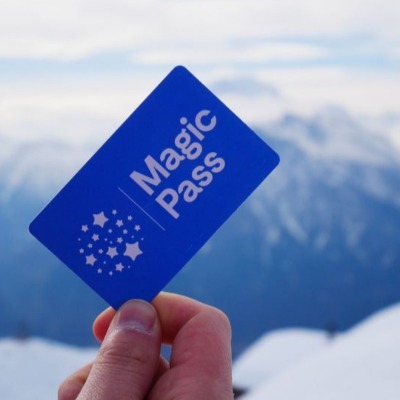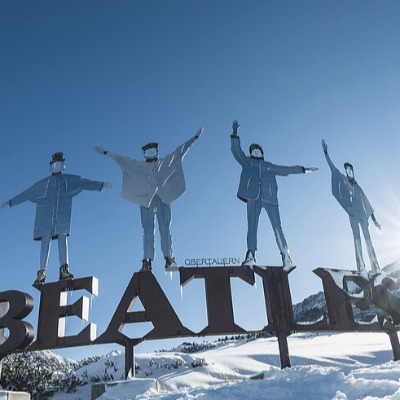U.S. Moguls Ski Team Wraps Successful Annual Training Camp In Zermatt,

The U.S. Moguls Ski Team wrapped a very successful annual training camp in Zermatt, Switzerland. The idyllic resort town provided a home away from home for athletes and staff on their journey to podiums this competition season.
While it has been a busy summer of training on the water ramps at the Utah Olympic Park, and at three on-snow camps at Mount Hood, Ore, Zermatt was the real kick-off to the season, providing the first opportunity for athletes to ski a full mogul course (220-260 meters with a top and bottom jump). Additionally, the Zermatt course also met the International Ski Federation (FIS) competition standards and provided an opportunity for athletes to work on their whole performance.
“Zermatt is one of my favorite places to get back on snow after a long summer of training. It’s arguably one of the most beautiful places in the world, and it also has a training site that offers a ton of different challenges each day. From various snow conditions to white-out blizzards, it forces you to mentally prepare yourself for anything the season may throw at you.” - Casey Andringa, U.S. Moguls A Team.
Why Zermatt? “From late September through October, Zermatt is the place to be as it is one of the only mogul courses open for training,” explained U.S. Ski & Snowboard Moguls World Cup Coach Caleb Martin. “Zermatt provides dry, winter snow, similar to what athletes will ski on during the competition circuit. This is different from our summer camps in Squaw or Mount Hood, where we’re skiing in ‘corn’ or slushy conditions.”
Considered a high altitude training site at 12,000 feet above sea level (more typical for competitions is around 7,000-8,000 feet), the course at Zermatt offers great training as the contours of the slope change. The top half of the course is an easy-moderate pitch of 22-25 degrees, while the bottom half rolls over to 28-30 degrees. This translates into an easier top jump scenario with a more difficult bottom air approach.
“Because of the change in slope and different jump scenarios, athletes are challenged to use different techniques and tactics, helping to make them well-rounded skiers,” Martin explains
Training camp is broken into four-day blocks: three days of training followed by an “off” day. During the first two blocks, athletes work on skills in the flats, moguls in sections and increase the degree of difficulty in their jumps. Throughout the camp, the number of top-to-bottom runs steadily increases as fundamental training in sections decreases. By the last days of training, athletes are skiing at least six top-to-bottom runs: what they would expect to perform on a competition day.
“In World Cup competition athletes can ski up to four runs during a mogul competition and up to six runs during a dual mogul competition (not including the two to three warm-up runs they take before the competition starts),” U.S. Ski & Snowboard Head Moguls Coach Matt Gnoza explained. “By skiing top to bottom runs in training, the athletes can put together the skills they’ve worked on in specific areas like jumps and turns, and combine them to work on their entire run package.”
Athletes look forward to this particular camp each year as they get to put together all of their summer training into actual ski runs.
"I started performing a new trick: a back full twist. I just started doing this trick on snow this summer, so it felt really good to put in in a top to bottom run on a difficult course," Tess Johnson, U.S. Moguls A Team.
It takes a village to create champions, which is why a full complement of staff travels with the team to Europe. On site at Zermatt was head coach Matt Gnoza; strength coach Josh Bullock; mogul coach Caleb Martin; aerial coach Vladamir Lebedev; physical therapist Chuck Williams; and nutritionist Allen Tran. It is this crew’s job to prepare and inspect the training course and landings each day, provide on-snow coaching, leads morning warm-ups, and after-ski strength and conditioning care, provide physical therapy care and review video and training plans each evening with the athletes.
A typical training day starts at 7:30 a.m. for Gnoza, Martin and Lebedev when they meet at the base of the lift to load for course prep. Athletes load by 8:30 a.m. and begin their warm-up routines by 9 a.m. with coach Bullock. After some flat ski work and a course inspection, athletes begin on-course training by 10:15 a.m and ski until about 1:15 p.m., averaging between 12 and 20 jumps and 10 runs a day. Coaches will stay until 2 p.m. when the glacier closes to prepare the slope for the next day. Athletes have a short break to eat and change before working with Williams in physical therapy sessions, and or strength and conditioning workouts with coach Bullock, which start at 2:30 p.m. and run until about 5 p.m., when athletes and coaches review video from the day.
“Zermatt is by far my favorite training camp. The course is always really tough, which I enjoy and think really helps us prepare best for the upcoming season. Zermatt is such a crucial camp for our team because it’s the first look at a World Cup level course for the season. We kind of get to see how we’re looking against every other country.” - Jaelin Kauf, U.S. Moguls A Team.
Training in Zermatt is a clash of opposites: the scenery is spectacular, and the challenges are even more so. To get on snow from town, staff and athletes take a gondola and two aerial trams to get to the top - commute times can sometimes run as long as two hours. And because Zermatt is one of the only mogul courses open at this time of year, there can be 200-plus athletes from across the globe all vying for practice time. All of those skis on the same snow causes erosion on the course to the point that the glacial ice starts coming through between bumps and jump landings, which get packed out rapidly.
While these extraneous factors can cause the impact of training on athletes’ bodies to be that much more intense, the opportunity to be back skiing full runs is priceless.
“Zermatt is an important time in the prep period to combine skill-based training from earlier this summer with strength and endurance work done in the gym to start to see the end product develop in top to bottom runs,” Gnoza said. “Once athletes get up to speed in their top to bottom training, we can try different trick combinations and tactics. We eventually come up with a ‘run package’ that they can perform any time and any place that has the potential to put them on the podium.”
"I have a few new tricks up my sleeve as well as improved skiing technique that I was able to integrate into my competition runs on a consistent basis. I feel as though I'm coming away from a productive three weeks more prepared than I've ever been for the competition season ahead." - Olivia Giaccio, U.S. Moguls A Team
So what is next for the Moguls Team? After their jetlag wears off they will be back training in Park City, Utah at U.S. Ski & Snowboard’s Center of Excellence. Then it is off to Kaprun, Austria, for their next training project. The U.S. Moguls Team competition season kicks off December 7, 2018, in Ruka, Finland, with their season-opening World Cup event.













